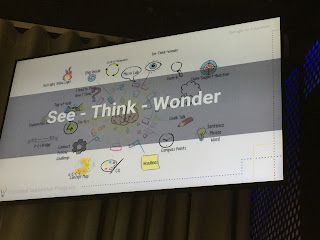Gummy Bears on Fire!
As this was more fun to do then video, we found an old video on YouTube to give a demonstration.
This was fun, exciting and awesome to do!!
In this experiment, a demonstration of a spontaneous exothermic reaction will
take place between a gummy bear and molten potassium chlorate. Once the potassium
chlorate has been melted in a test tube, a gummy bear will be dropped to his doom and
flames will burst out of the tube as a result.
Materials:
1. Safety first! Wear safety glasses
2. Plastic Shield
3. Gummy Bears
4. Potassium Chlorate (About 5-7 grams)
5. Pyrex Test Tube
6. Ring Stand with Clamp
7. Bunsen Burner
8. Matches
9. Tongs
10.Fume Hood or Snorkel
Safety:
WARNING! Do not stand near experiment, and always remain on the outside of
the fume hood. Viewers must stay behind demonstrators at all times for safety
precautions. Those who are sensitive to light should avoid this demonstration.
Procedure:
- Pour about 10g of Potassium chlorate into a long medium/large test tube. Do not do this experiment with a small or short test tube as molten pieces of bear will fly out while the reaction progresses.
- Place the test tube into a clamp on a ring stand. Make sure that this set up is done in a Fume Hood. There will be lots of smoke, fire, and possible flaming pieces of molten gummy bear.
- Place the end of the test tube under a Bunsen Burner or onto a hot plat. (Bunsen Burner will give quicker results). Heat the Potassium chlorate until it is in a liquid state.
- Use a pare of metal tweezers to carefully add a gummy bear to the mixture. *Note: the potassium chorate will quickly recrystallize so do not take to long to add the gummy bear.
- Close the hood. Stand back and enjoy!
What's Really Going On...?
Gummy Bears are mostly made up of sugar. Sugar is also known as sucrose in
organic chemistry. Sucrose is a disaccharide made up of two monosaccharide
molecules known as glucose and fructose. Below is the structure for Sucrose.
On the left side of this molecule is the part of the structure that's made up by
glucose.
The right side is fructose. They are bonded in the middle by the oxygen.
This
bond is called a glycosidic bond, which just means that it is a covalent bond that bonds
carbohydrates to another group.
This other group can also be other carbohydrates, like
we have seen above.
What are carbohydrates?
They are organic molecules that only contain carbons,
hydrogens and oxygen atoms. Carbohydrates are also known as sugars.
Okay, now that you know some background information, let's talk about what's
going on.
When the potassium chlorate is heated, it decomposes into potassium
chloride and oxide, as seen below:
2KClO3(s) 2KCl(s) + 3O2(g)
When the gummy bear is dropped, the oxide from the decomposition of
potassium chlorate reacts with the glucose molecule in sucrose.
This reaction is a
spontaneous combustion reaction:
C6H12O6
(s) + 6O2 (g) 6CO2(g) + 6H2O (g)
The overall reaction is seen below:
C12H22O11 (s)
+ 8KClO3 (s) 12CO2 (g) + 11H2O (g) + 8KCl (s)
This reaction is an exothermic reaction because energy is released, in the form
of heat, which can produce light, as seen by the purple hued flames. Hope you enjoyed
this demonstration! Please answer the following questions and take note of any
observations.

Comments
Post a Comment